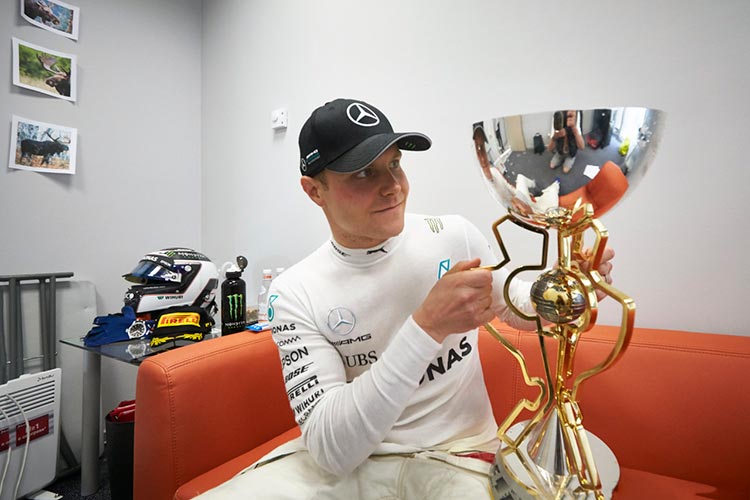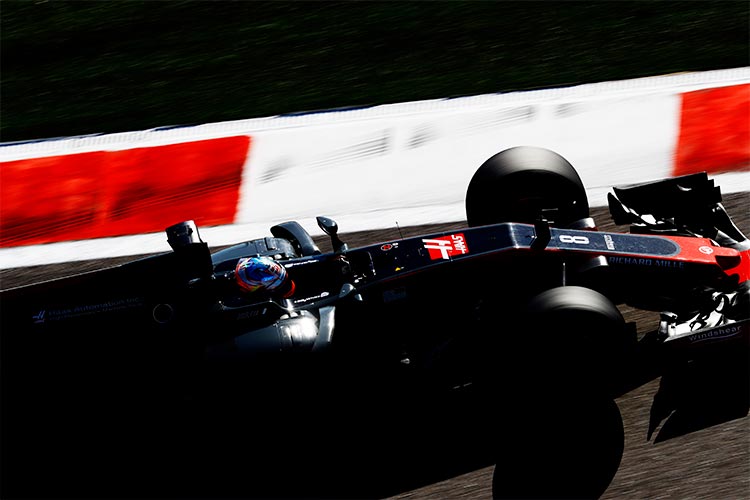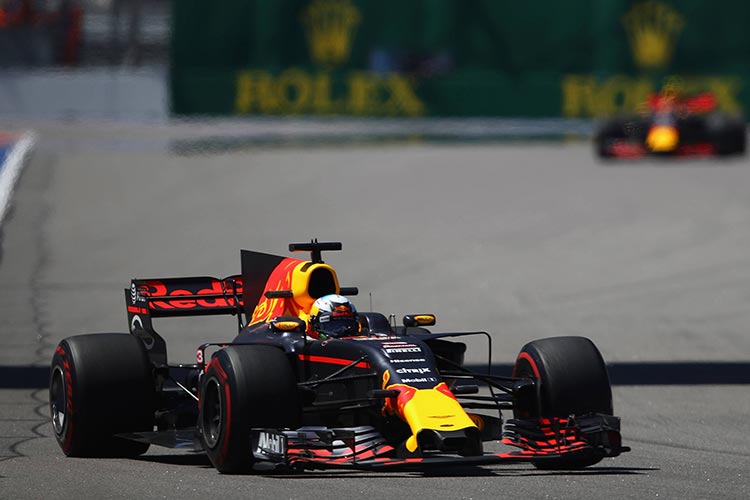If you thought Vladimir Putin’s late arrival to this year’s Russian Grand Prix was simply a lesson in being fashionably late from a man not adverse to making a scene, consider that the Russian President may have timed his arrival perfectly, just in time to witness an enthrallingly tense climax to a slow-burning race.
There may have only been eighteen on-track overtakes, one less than the number of cars to line up on the grid, but the battle at the head of the field between Mercedes and Ferrari continued to provide tension and intrigue as the two teams traded fastest laps and dared each other to make critical strategy calls throughout the 52 laps.
Bucking the trend seen in the first three races of 2017, it was Ferrari who showed exceptional one-lap pace to produce the Scuderia’s first front row lock out in nine years, only the team’s sixth pole position in the last decade and proving, if there was any doubt, that the days of Mercedes domination are a thing of the past as it would seem Ferrari now have a car for Saturdays as well as Sundays.
Yet it was Valtteri Bottas who claimed his first grand prix victory at his 81st attempt after stealing the lead at the start, courtesy of that kilometre stretch to the first braking zone and some juicy slipstream from Vettel’s Ferrari. From previous races in Russia, we know Bottas is somewhat of Sochi specialist and, just as it seemed in Bahrain, he had an edge in pace over his more illustrious team-mate Lewis Hamilton all weekend. But could he hold off both Ferraris?

Bottas inspects his winning trophy – Credit: Daimler AG
Unlike Bahrain, Bottas was able to hold on to his lead, despite immense late race pressure from a flying Sebastian Vettel on fresher rubber. Should Ferrari have pitted Vettel later and given him a greater advantage of fresh rubber, or sooner and afforded him more laps to mount a challenge? Regardless of the Ferrari strategy, Bottas drove a composed final stint — despite one lock up into turn 13 — and absorbed the pressure like a pro; his calm request for less radio communication from Tony Ross, his engineer, as the Ferrari loomed larger in his mirrors, speaks volumes of Valtteri’s ability to keep his head.
Is Bottas a championship contender? He certainly broke through a glass ceiling by winning in Russia and has given Mercedes a headache. While Ferrari can confidently back Vettel as their number one, an increasingly confident and competent Bottas means Mercedes have to consider how they want to play the game with their two drivers this year. Both championships are finely balanced and after Russia, they could go either way.
Elsewhere it was the race the doom-and-gloomers predicted at the start of 2017 with drivers finding it difficult to overtake in their new, wider, aero-sensitive cars. A one-stop strategy and a track layout that has never lent itself to much overtaking didn’t help as perhaps demonstrated by Vettel’s inability to attack Bottas for the lead and Lewis Hamilton appearing to settle for a distant and un-Lewis Hamilton-esque, fourth.

Credit: Haas F1
Even lapped cars were proving more pesky than usual, with the string of corners from turn 3 onwards providing few opportunities to clear the slower cars and DRS proving less effective this year – cue cheers from the anti-DRS purists. It made the start of the race crucial, as Bottas showed, and probably why Romain Grosjean demonstrated little patience in getting by Jolyon Palmer, resulting in a crash that was rightly declared a racing incident.
It was a crucial race start that was without Fernando Alonso however, as his McLaren MCL32 failed on the first of two formation laps and 75 kilos of wasted Spanish talent trudged its way back to the garage, dreaming no doubt of his imminent Indy 500 appearance. Sauber’s announcement in Russia that they are to run Honda engines in 2018 will doubtless help the Japanese manufacturer gather more data and iron out the many issues they are having with their power unit, something that can’t happen fast enough for McLaren and Alonso.
If the Russian grand prix proved anything it was that F1 2017 is operating as a two-tier formula; Mercedes and Ferrari running clear at the front, trailing a closely matched mid-field, Sauber and McLaren gamely clinging on to them. Red Bull however, appear to be in a performance limbo, filling the void between the two tiers and hoping their brakes don’t fail as happened to Max Verstappen in Bahrain and Daniel Ricciardo in Russia.

Credit: Getty Images / Red Bull Content Pool
Next up is the Spanish grand prix however, the start of the European season and where the terms ‘B-Spec’, ‘wind tunnel correlation’ and ‘upgrade’ are banded around with great optimism as teams bolt new wings and trick carbon fibre bits to their cars. Can Red Bull escape from the class of their own to join the top two? Or will they slip into the baying pack that is the tight and feisty mid-field?
One thing is certain, Ferrari and Mercedes will continue to push each other at the head of the field and enthral us mere mortals who watch them.



